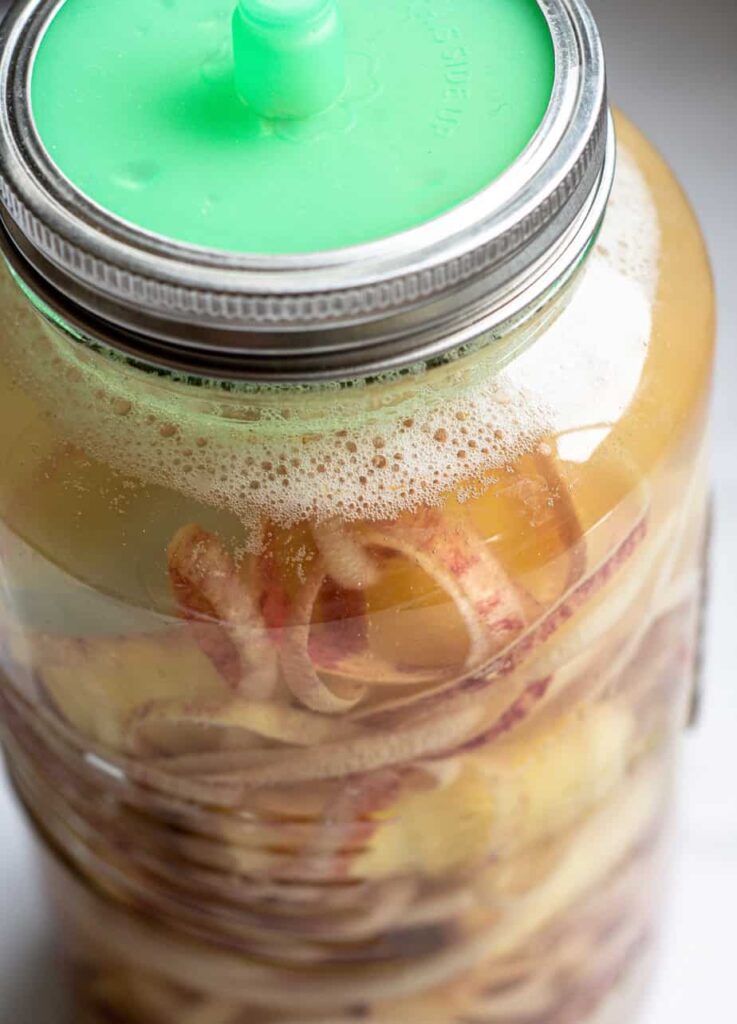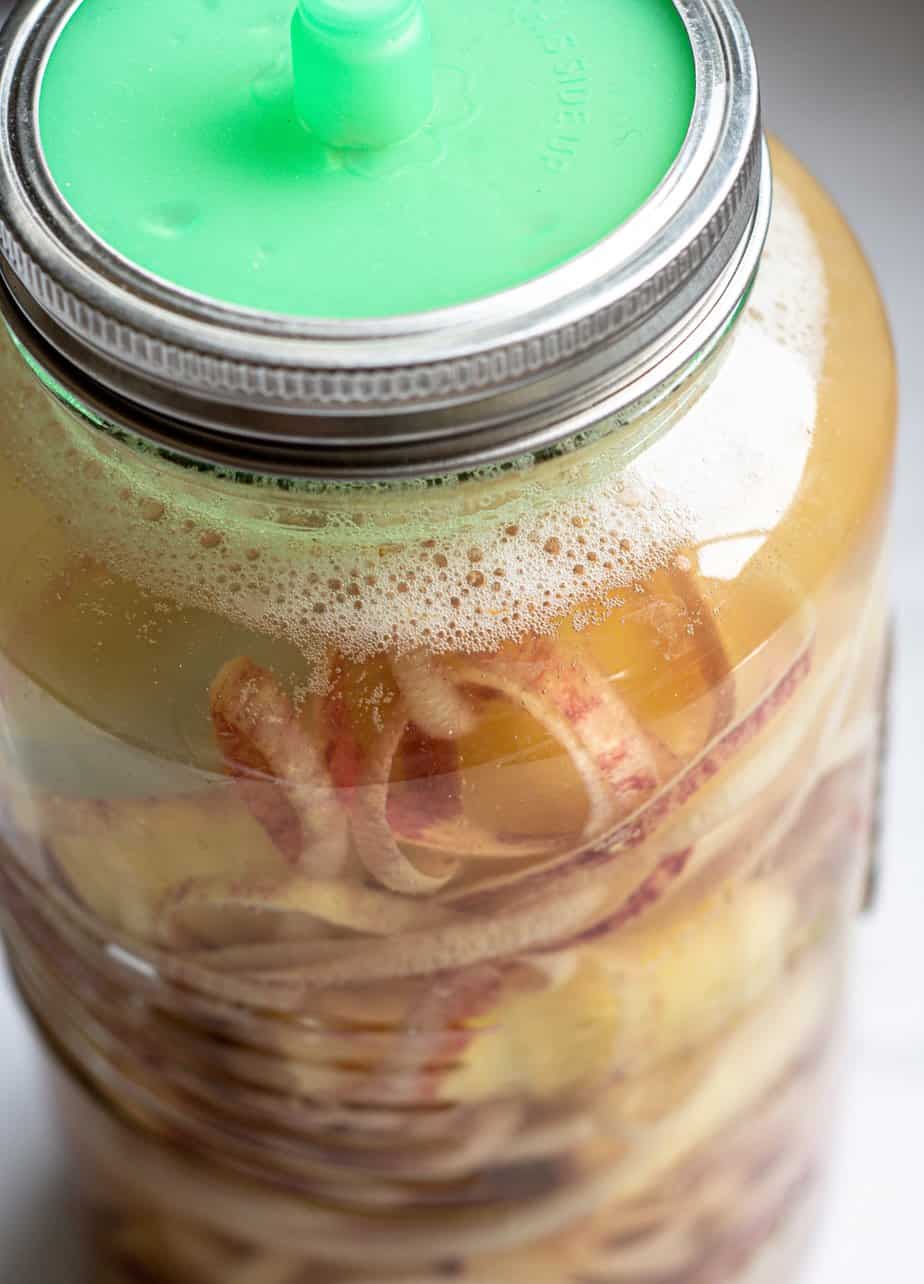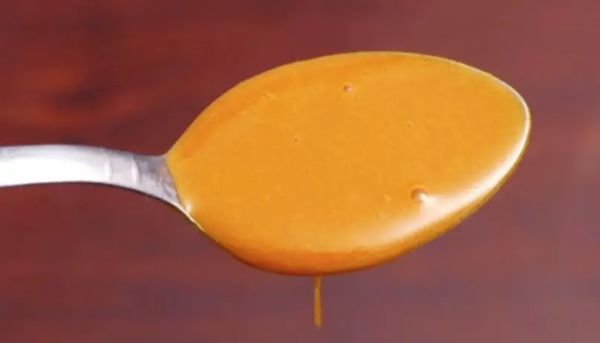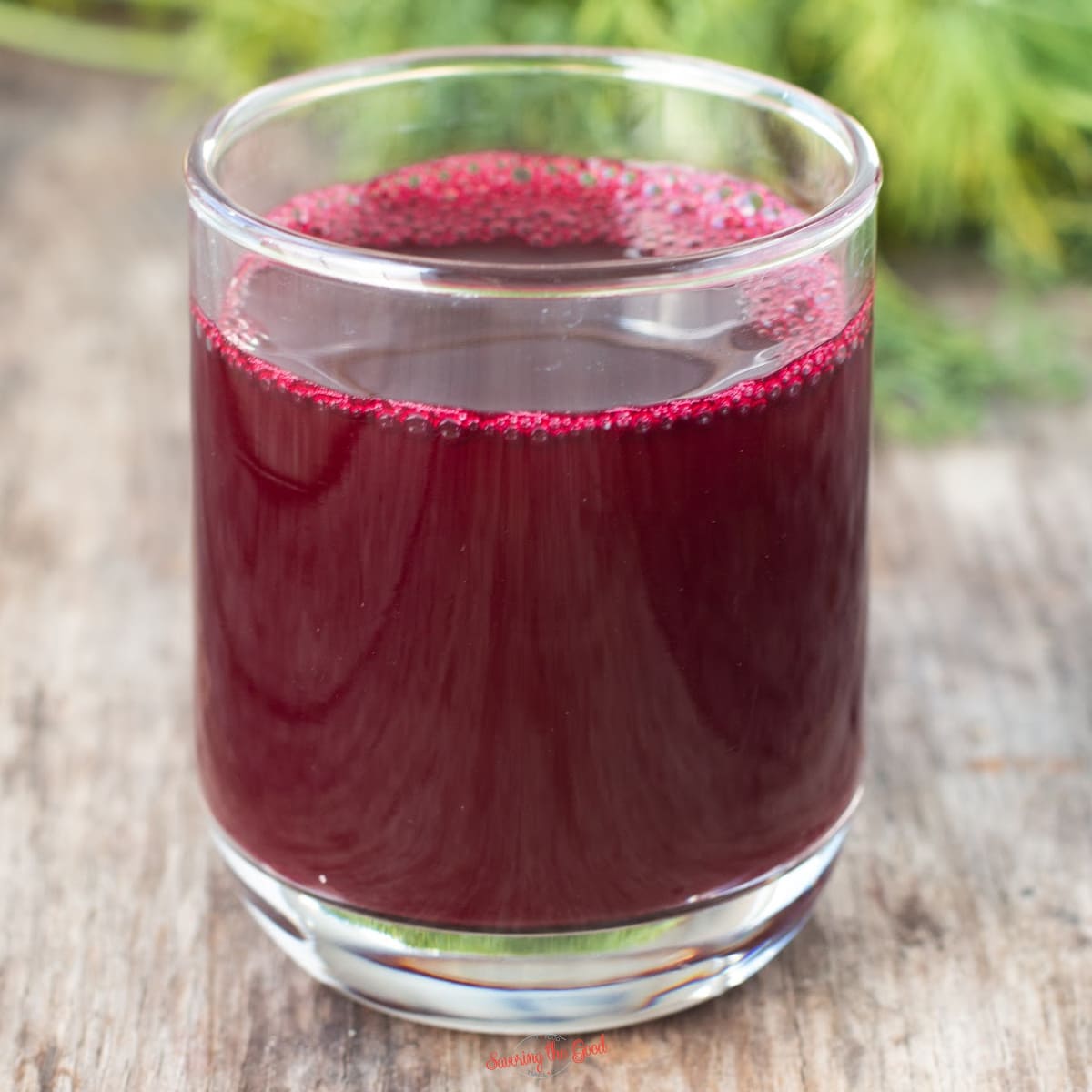
Apple cider vinegar (ACV) is a versatile kitchen staple known for its numerous health benefits, including aiding digestion, lowering blood sugar levels, and even contributing to weight loss. Instead of buying it, you can easily make your own ACV at home using apple peels and cores. Not only is this a great way to utilize kitchen scraps, but it also ensures you have a natural, preservative-free product. Here’s how you can make your own apple cider vinegar:
Ingredients:
- Apple peels and cores (from about 6 large apples)
- 2 tablespoons of sugar (optional, depending on your preference for fermenting)
- Filtered water
- 1 large glass jar
Equipment:
- Cheesecloth or coffee filter
- Rubber band or string
Instructions:
- Prepare the Apples:
- Collect the peels and cores from approximately 6 large apples. Make sure the apples are organic if possible, to avoid pesticides and chemicals. Wash them thoroughly before peeling and coring.
- Start the Fermentation Process:
- Place the apple peels and cores in a clean, large glass jar.
- Dissolve the sugar in a bit of warm water and pour it over the apple scraps. Sugar aids the fermentation process, but you can reduce the amount or leave it out if you prefer a slower fermentation.
- Add enough filtered water to cover the apple pieces completely.
- Cover the Jar:
- Cover the opening of the jar with a piece of cheesecloth or a coffee filter. Secure it with a rubber band or string. This allows the mixture to breathe and lets natural yeast in while keeping insects and debris out.
- Ferment the Mixture:
- Keep the jar in a warm, dark place for about 3 to 4 weeks. Check periodically to ensure that the apple pieces are submerged in water, adding more if necessary to prevent mold.
- Strain the Liquid:
- After 3 to 4 weeks, strain out the solids using a fine mesh sieve, and transfer the liquid back into the jar. Compost the apple solids or discard them.
- Second Fermentation:
- Cover the jar again with the cheesecloth or coffee filter and return it to the same warm, dark place.
- Let it sit for about 4 to 6 more weeks, stirring every few days. The longer it sits, the stronger the vinegar will be.
- Bottle Your Vinegar:
- Once the vinegar has reached your desired acidity level, remove the cheesecloth, and seal the jar with a lid.
- Store the vinegar in a cool, dark place. It will continue to mature and develop flavor over time.
Tips:
- Monitor for Mold: If you notice any mold growing on the surface of the fermentation, skim it off immediately and ensure that the apple pieces are fully submerged.
- Acidity Check: To test if the vinegar is ready, you should taste it. It should have a distinctly tangy flavor.
By making your apple cider vinegar at home, not only do you create a healthier product, but you also contribute to reducing food waste. Homemade ACV can be used in salad dressings, marinades, or as a daily health tonic. Enjoy the satisfaction of creating something beneficial and sustainable in your own kitchen!





